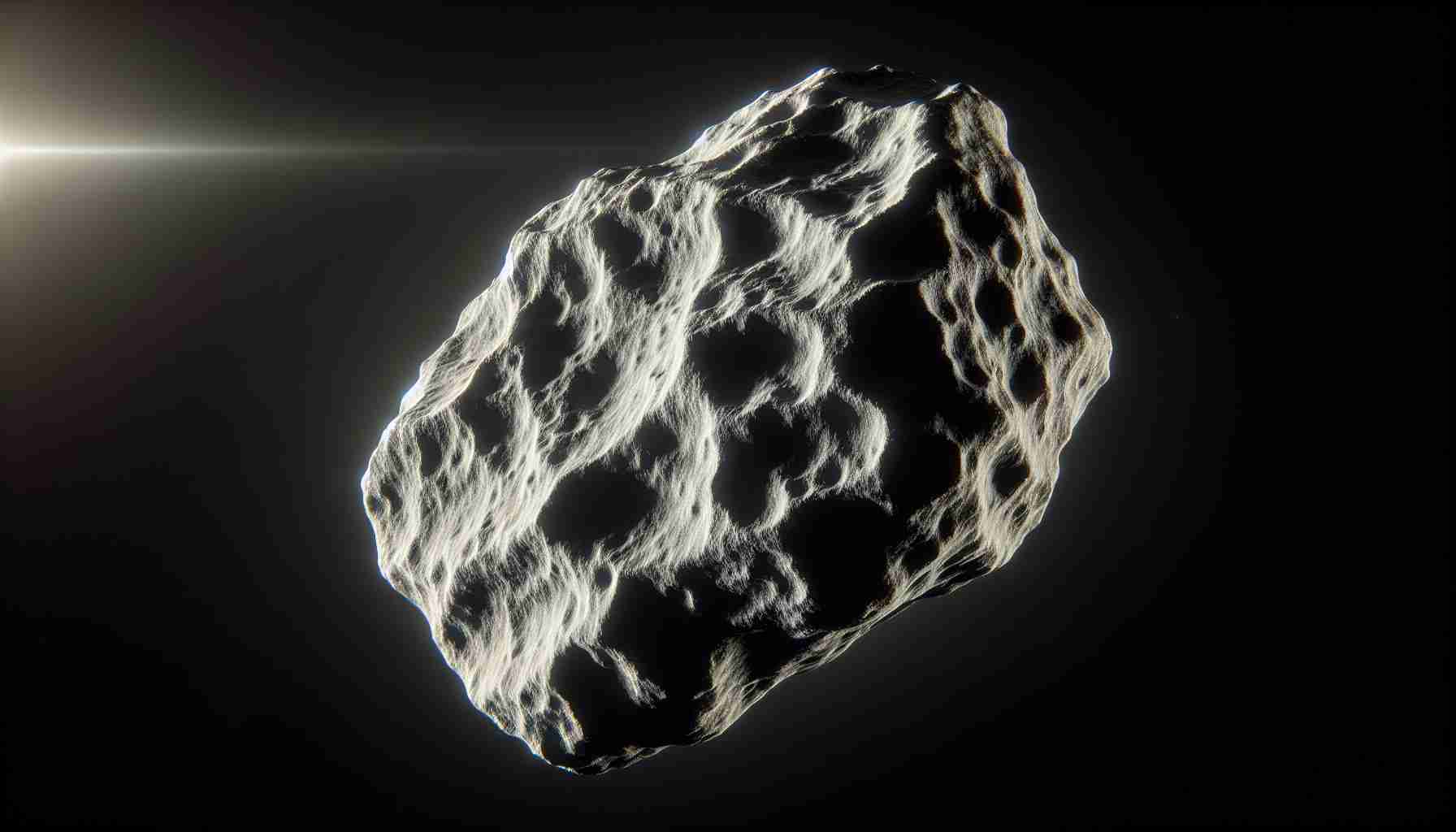- The James Webb Space Telescope’s recent observation sparked widespread speculation about extraterrestrial presence.
- Representative André Carson evaded questions about classified briefings, fueling public imagination about the sighting.
- Radar images from Arecibo Observatory showed a large object, leading to theories about an alien craft arriving near Earth.
- The object, asteroid 2003 UX34, is classified as “potentially hazardous” by NASA, with its radar appearance causing misconceptions.
- Experts clarify that its disc-like image results from radar Doppler effects, not indications of extraterrestrial design.
- A Harvard astronomer suggested such cosmic bodies may deploy mini-probes for surveillance, echoing the mystery of ‘Oumuamua.
- Despite intriguing theories, most astronomers remain skeptical of alien involvement, stressing both wonder and caution in space exploration.
A simple question spiraled into an internet frenzy—what exactly has the James Webb Space Telescope spotted? When Representative André Carson deftly sidestepped queries about classified briefings on this enigmatic discovery, the public’s imagination took flight. Whispers of an object on a determined course towards Earth morphed into full-blown speculation: could this be an intelligently controlled alien craft?
Captured by the now-defunct Arecibo Observatory, images of an object approximately 300 meters in diameter, at nearly 18.5 million kilometers from Earth, set social media ablaze. Excitable UAP enthusiasts and alien faithful envisioned a narrative unfolding from these radar images—an extraterrestrial mothership accompanied by its smaller companions orbiting strategically.
But before you imagine Independence Day scenarios, experts set the record straight. The cosmic body of interest is an asteroid, designated 2003 UX34, with a classification as “potentially hazardous” by NASA’s Jet Propulsion Laboratory. The eerie disc-like appearance resulted from radar imaging quirks, not celestial intentions. Its rotation creates Doppler shifts that stretch the signal visually, while smaller bodies appear slim because of their slower movement.
Adding layers to this tale, prominent figures like a Harvard astronomer speculated that objects of this nature could serve as cosmic carriers, dispatching mini-probes for surveillance within our solar system, reminiscent of the intriguing ‘Oumuamua.
Yet, surfaces in the universe remain unscarred by alien probes, leaving most astronomers skeptical. Despite fanciful theories and decommissioned telescopes, the sky remains infinite with possibilities, just as theories about what it might conceal continue to unfold in humanity’s endless pursuit of knowledge. Keep dreaming, but with a sprinkle of skepticism—our curiosity may lead us to answers, one asteroid at a time.
Is the James Webb Space Telescope Uncovering Alien Life?
Additional Insights on the James Webb Space Telescope and Asteroid 2003 UX34
What spurred this frenzy around the James Webb Space Telescope (JWST) and the asteroid 2003 UX34 illuminates both human curiosity and our penchant for speculation. While headlines may tantalize with extraterrestrial revelations, the reality roots us in a pursuit of scientific understanding. Here, we delve into the factual and speculative aspects surrounding the JWST and this celestial event.
Features and Specifications of the James Webb Space Telescope
The James Webb Space Telescope is an engineering marvel designed to probe the deepest mysteries of our universe. It boasts:
– Primary Mirror: 6.5 meters across, JWST’s primary mirror is significantly larger than that of the Hubble Space Telescope, enabling it to collect more light and observe fainter objects.
– Infrared Capabilities: JWST observes the universe primarily in the infrared spectrum, allowing it to see through cosmic dust clouds and discern the heat signatures of distant astronomical objects.
– Location: Positioned at the second Lagrange point (L2), it’s about 1.5 million kilometers from Earth—an ideal station for deep space observation without interference from Earth’s atmosphere or electromagnetic fields.
For more details, you can visit the NASA website.
How-To Steps for Following JWST Discoveries
1. Stay Updated via NASA: Check NASA’s official announcements and press releases for real-time updates on JWST findings.
2. Follow Research Publications: Websites like arXiv and Google Scholar publish detailed scientific papers from researchers leveraging JWST data.
3. Engage with the Community: Join forums or social media groups focused on astronomical discoveries and discussions surrounding JWST if you’re keen on the topic.
Real-World Use Cases of JWST Discoveries
– Studying Exoplanets: JWST’s infrared capabilities allow it to analyze exoplanet atmospheres, detecting potential biosignatures such as water vapor, carbon dioxide, and other molecules.
– Uncovering Stellar Nurseries: By observing regions obscured by dust and gas, JWST helps understand star formation processes vital for galactic evolutionary models.
– Investigating Cosmic Origins: By peering back to the formation of the earliest galaxies, JWST contributes profoundly to our understanding of universe formation.
Controversies and Limitations in Asteroid Detection
Despite the surge of interest in potential alien encounters:
– Asteroid 2003 UX34: As mentioned, this asteroid is considered “potentially hazardous” due to its size and proximity to Earth. However, none of the current data indicates it poses a genuine threat of collision.
– Radar Imaging Limitations: Radar echoes create distorted images based on an object’s rotation and speed, not indicative of alien characteristics but merely quirks of radar detection as noted by experts.
Reviews and Comparisons with Other Observatories
– JWST vs. Arecibo Observatory: While Arecibo provided valuable radar data on NEOs (Near-Earth Objects) until its collapse in 2020, JWST complements these historical observations with new data in different spectrums.
– Stellar Observatories: Compared to other space telescopes like Hubble, JWST’s infrared suite opens a new window on the universe that others cannot, revealing phenomena previously invisible.
Pros and Cons Overview
Pros:
– Unprecedented infrared vision.
– Located far from Earth-based interference.
– Comprehensive exploration capabilities from early universe phenomena to solar system studies.
Cons:
– Limited operational lifetime due to finite fuel for orbital adjustments.
– Initial funding and operational costs have been significantly higher than planned.
Conclusion: The Smart Approach to Following JWST Reports
For readers eager to uncover cosmic secrets, start by cultivating a practiced skepticism alongside robust intellectual curiosity. Embrace scientific findings while welcoming imaginative possibilities, and always prioritize verified data.
Actively engage with science communities, educate yourself on the mechanics of space observation, and relish the unfolding cosmic narrative with a grounding in factual discoveries.
Stay tuned to official channels like NASA and the European Space Agency for authoritative updates and findings.



















